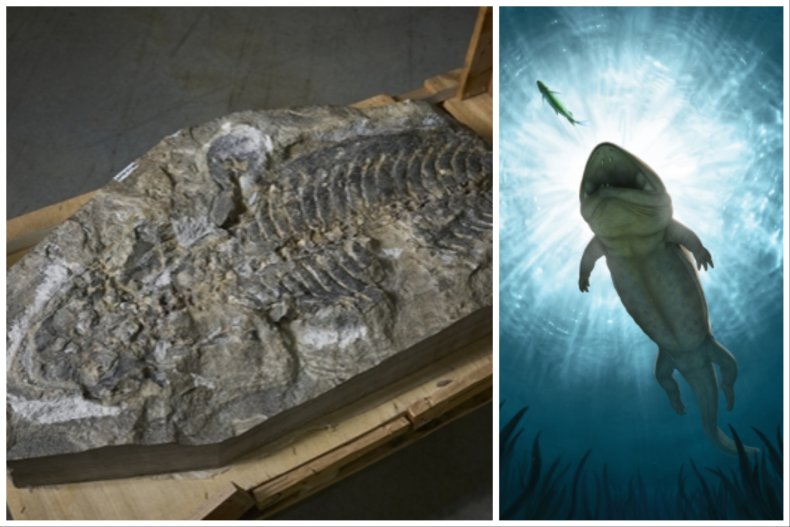A prehistoric creature with “gnarly teeth” and “fang-like tusks” that lived hundreds of millions of years ago has been discovered in Australia.

Researchers described the previously unknown giant amphibian species in a study published in the Journal of Vertebrate Paleontology. The lizard-like animal, which has been named Arenaerpeton supinatus, lived around 240 million years ago in what is now Australia.
The “unique” find has significant implications for the understanding of amphibian evolution in Australia, according to experts. The fossil of the newly identified species was discovered in rocks cut from a quarry in the southeastern state of New South Wales in the 1990s.
But it is only now that researchers from the University of New South Wales (UNSW) Sydney and the Australian Museum have formally named and described the species in the latest study.

The fossil includes almost the entire skeleton of the ancient creature, and remarkably, even the outlines of its skin.
“This fossil is a unique example of a group of extinct animals known as temnospondyls, which lived before and during the time of the dinosaurs,” Lachlan Hart, an author of the study with UNSW and the Australian Museum, said in a statement. “We don’t often find skeletons with the head and body still attached, and the soft tissue preservation is an even rarer occurrence.”
The amphibian lived in freshwater river environments, and most likely hunted ancient fish species. According to the researchers, it would have resembled the modern Chinese giant salamander—another lizard-like amphibian—particularly when it comes to the shape of the head.

“However, from the size of the ribs and the soft tissue outline preserved on the fossil we can see that it was considerably more heavyset than its living descendants. It also had some pretty gnarly teeth, including a pair of fang-like tusks on the roof of its mouth,” Hart said.
Researchers estimate that the amphibian was large, measuring almost 4 feet long from head to tail. This is significant because most other closely related animals living at the same time were small. Over time though, temnospondyls generally grew larger in size.

“The last of the temnospondyls were in Australia 120 million years after Arenaerpeton, and some grew to massive sizes. The fossil record of temnospondyls spans across two mass extinction events, so perhaps this evolution of increased size aided in their longevity,” Hart said.
The new species belongs to the family Chigutisauridae—a subgroup of the temnospondyl order. Chigutisauridae fossils from Australia are rare, adding to the significance of the latest find.

“This is one of the most important fossils found in New South Wales in the past 30 years, so it is exciting to formally describe it,” Matthew McCurry, a co-author on the study with UNSW and the Australian Museum, said. “It represents a key part of Australia’s fossil heritage.”
The fossil will go on display at the Australian Museum later this year.